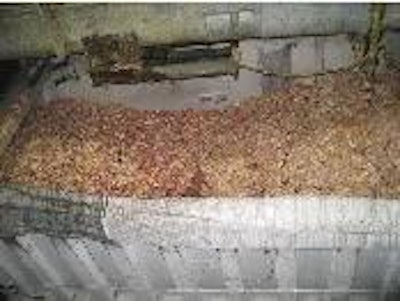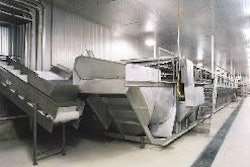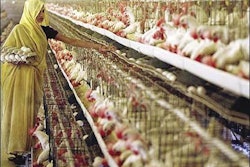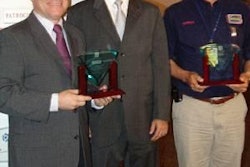
Poultry offal is collected at processing plants without on-site rendering in a trailer, stored there until it is full, and then is transported to the rendering facility. From the minute the offal is removed from the bird, it begins to degrade in quality. Poultry intestines do not fare well in high temperatures and begin to decompose rapidly. This decomposition results in growth of pathogenic and saprophytic bacteria that breakdown the quality of the offal for use later on.
It is expensive to transport offal because of the high water content. The distance to the rendering plant may also be hundreds of miles. The process of rendering can also impact negatively the quality of the protein and fat that is recovered.
Alternative to rendering
In 1990, our research group set out to find out if offal could be stabilized at the poultry plant so that pathogenic and saprophytic bacteria are unable to grow, and to see if we could recover valuable byproducts from the offal without a cooking step. One approach we evaluated was fermentation.
Poultry offal consisting of intestines, head and feet was collected at a local processing plant and ground. After grinding, a fermentable substrate was added to the offal. In our study, we used dextrose, but many potential substrates could be used that cost much less, such as whey. After adding the carbohydrate source, a silage bacterial culture used for fermenting silage for cattle was added. The offal was fermented at 98.6 F for 48 hours. This process produced a liquid that was the consistency of liquid yogurt. This material was analyzed to determine its nutritive value for poultry.
Fermentation stabilizes the mix
The fermented offal contained approximately 19.1% fat, even with the feet in the mix, which did not contribute to the fat content. Many plants now export paws, we expect 22% to 25% of the composition of the fermented offal without feet to be fat.
Centrifuging the fermented offal proved to be an effective means of extracting a clean and clear layer of fat, which could be easily decanted from the top of the fermentate. Subsequent analysis of the decanted fat showed it to be of high quality.
In a later study, fermented offal and fresh offal were evaluated to determine levels of a variety of bacteria. After fermenting for 120 hours, the offal became completely stabilized, such that no salmonella, aeromonas or fecal indicator bacteria could be detected.
Source of high-quality fat
All of these studies were completed and published over 15 years ago, but the significance of the findings didn't become evident until oil prices soared last summer. Our studies demonstrated that a rudimentary system for grinding, fermenting and centrifuging can be used to extract 18% to 25% fat from the offal. Based on our data, a chicken plant could produce over 10,000 gallons of oil from offal and approximately 1,000 gallons of oil from dissolved air flotation (DAF) skimmings per day by very simple processes that would take up little space and require little labor. It is then possible to convert this fat to biofuel for use in boilers and transport trucks, because the fat is of very high quality. A typical large processor uses 36,000 gallons of diesel a month. This production would easily allow a processor to become fuel independent. Based on our previous studies, the likelihood of success of this project is very high.
Even with the recent drop in oil prices, interest in biofuels remains high. There are several unanswered questions that should be addressed regarding the fermentation of offal, but the processes described here could provide poultry companies with an alternative to rendering that delivers more to the bottom line.

















